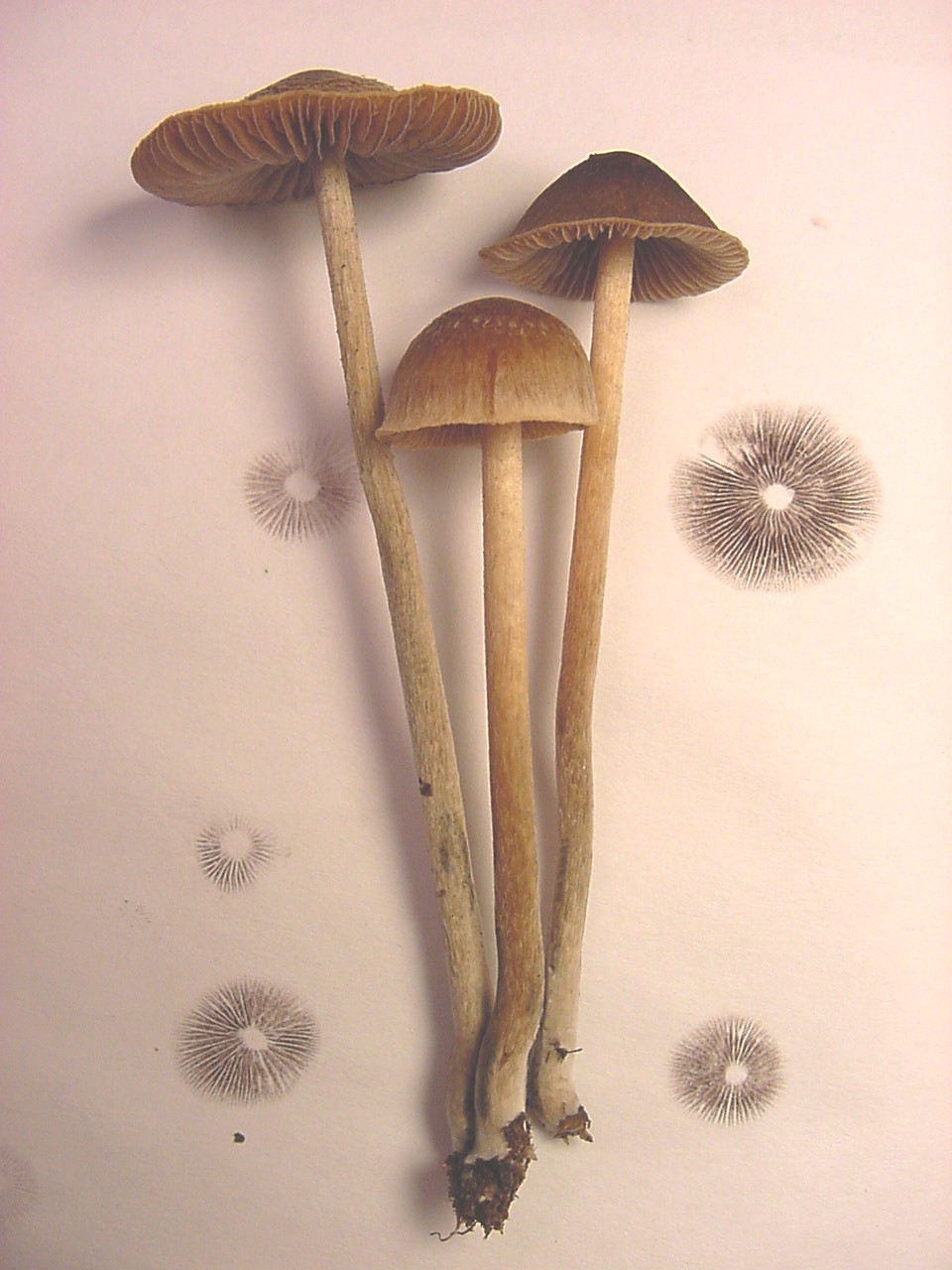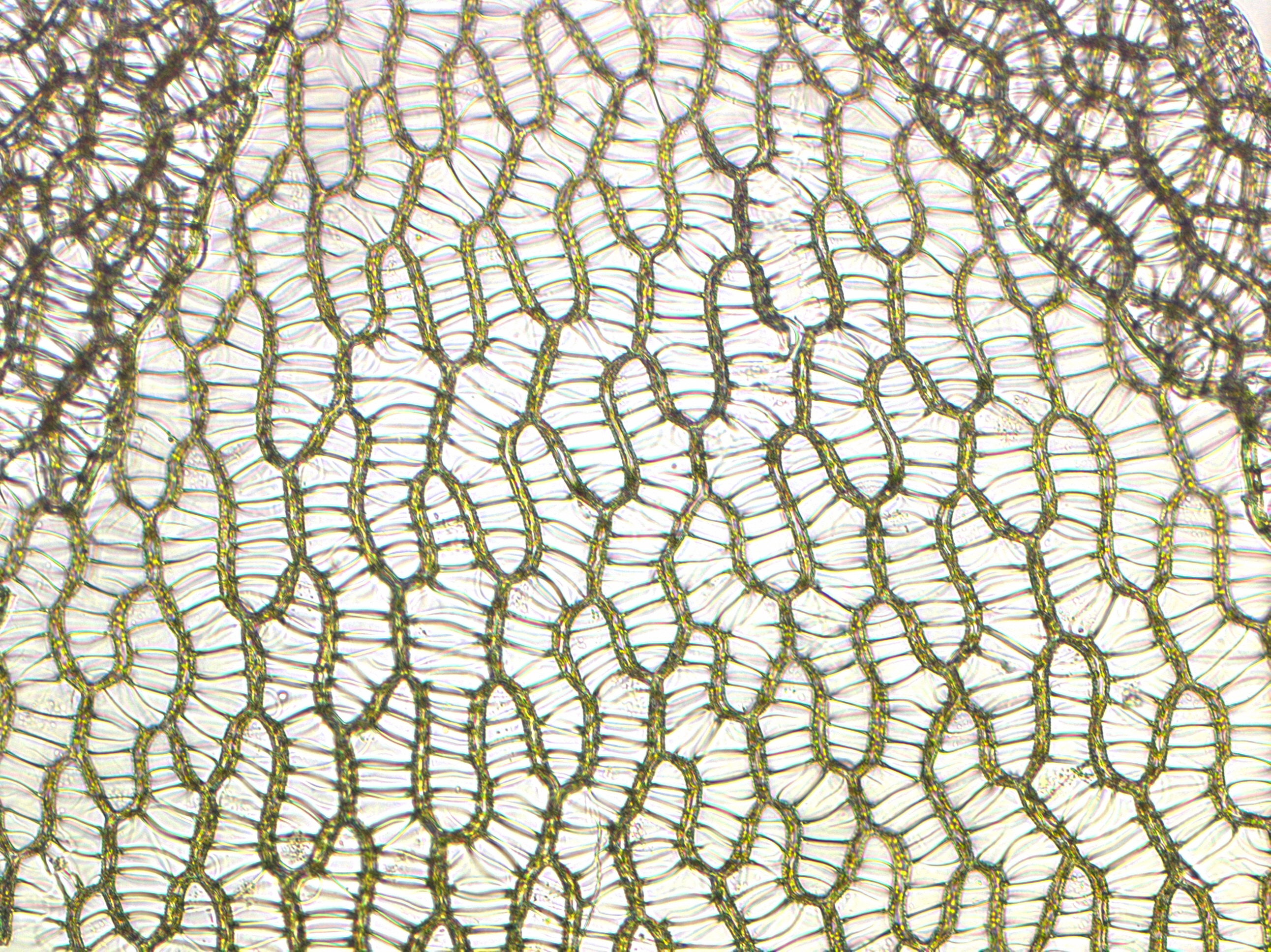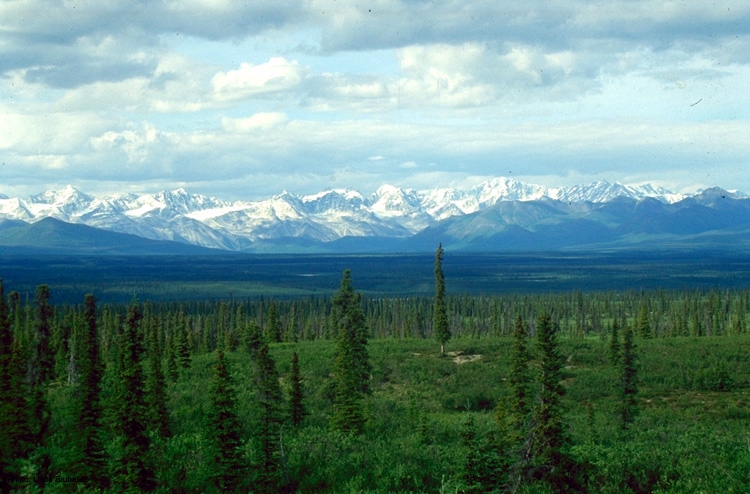|
Phaeogalera Sphagneti
''Phaeogalera'' is a small genus of slender, fleshy bog and swamp-inhabiting mushrooms with large, brownish spores with a germ pore and a hymenium lacking chrysocystidia. ''Phaeogalera'' resemble ''Galerina'' in their habitat, macroscopic appearance, and spore print color, however, their microscopic characteristics (smooth spores with a distinct germ pore and non-tibiiform cystidia) more closely resemble ''Psilocybe''. The type species, ''Phaeogalera stagnina'', has an Arctic-alpine distribution in the Northern Hemisphere extending into the boreal forests and taiga. It grows along the edges of bogs in peaty soils and sometimes amongst ''Sphagnum'' or other mosses. This type species has been classified in ''Galerina'', ''Tubaria'' and ''Psilocybe''. Modern molecular evidence supports the recognition of ''Phaeogalera'' as an independent genus separate from ''Galerina''. The generic name is built upon the antiquated generic name "Galera", now synonymous with ''Galerina'', and with a r ... [...More Info...] [...Related Items...] OR: [Wikipedia] [Google] [Baidu] |
Fungi
A fungus (: fungi , , , or ; or funguses) is any member of the group of eukaryotic organisms that includes microorganisms such as yeasts and mold (fungus), molds, as well as the more familiar mushrooms. These organisms are classified as one of the kingdom (biology)#Six kingdoms (1998), traditional eukaryotic kingdoms, along with Animalia, Plantae, and either Protista or Protozoa and Chromista. A characteristic that places fungi in a different kingdom from plants, bacteria, and some protists is chitin in their cell walls. Fungi, like animals, are heterotrophs; they acquire their food by absorbing dissolved molecules, typically by secreting digestive enzymes into their environment. Fungi do not photosynthesize. Growth is their means of motility, mobility, except for spores (a few of which are flagellated), which may travel through the air or water. Fungi are the principal decomposers in ecological systems. These and other differences place fungi in a single group of related o ... [...More Info...] [...Related Items...] OR: [Wikipedia] [Google] [Baidu] |
Psilocybe
''Psilocybe'' ( ) is a genus of gilled mushrooms, growing worldwide, in the family Hymenogastraceae. Many species contain the Psychedelic drug, psychedelic compounds psilocybin and psilocin. Taxonomy Taxonomic history A 2002 study of the molecular phylogeny of the agarics indicated the genus ''Psilocybe'' as then defined was polyphyletic, falling into two distinct clades that are not directly related to each other. The blue-staining Hallucinogenic mushroom, hallucinogenic species constituted one clade and the non-bluing species the other. The previous Type (biology), type species of the genus, ''Psilocybe '' (now ''Deconica montana''), was in the non-bluing clade, but in 2010, the type species was changed to ''Psilocybe semilanceata, P. semilanceata'', a member of the bluing clade. A 2006 molecular phylogenetic study of the Agaricales by Matheny and colleagues, further demonstrated the separation of the bluing and non-bluing clades of ''Psilocybe'' in a larger, strongl ... [...More Info...] [...Related Items...] OR: [Wikipedia] [Google] [Baidu] |
Meottomyces
''Meottomyces'' is a small genus of relatively nondescript, fleshy, brown mushrooms related to ''Tubaria''. In older classifications it had been included in ''Pholiota'', ''Phaeogalera'', or ''Hemipholiota''. Modern molecular evidence suggested recognition of a separate genus when sequences of a collection first identified as ''Pholiota oedipus'', now reclassified in ''Meottomyces'', revealed a unique branch. Subsequently, that species was studied by Holec and later as ''Phaeogalera oedipus'' was shown to be distinct from ''Tubaria'' but not the type of ''Phaeogalera'' itself. Additional phylogenetic support was provided by Gitte Petersen and others, who clearly showed a separation from ''Phaeogalera''. The genus was erected by Vizzini, for two species and two varieties, all former members of ''Pholiota ''Pholiota'' is a genus of small to medium-sized, fleshy mushrooms in the family Strophariaceae. They are saprobes that typically live on wood. The genus has a widespread dist ... [...More Info...] [...Related Items...] OR: [Wikipedia] [Google] [Baidu] |
Validly Published Name (botany)
In botanical nomenclature, a validly published name is a name that meets the requirements in the ''International Code of Nomenclature for algae, fungi, and plants'' (''ICN'') for valid publication. Valid publication of a name represents the minimum requirements for a botanical name to exist: terms that appear to be names but have not been validly published are referred to in the ''ICN'' as "designations". A validly published name may not satisfy all the requirements to be '' legitimate''. It is also not necessarily the correct name for a particular taxon and rank. Names that are not valid by ICN standards (''nomen invalidum'', ''nom. inval.'') are sometimes in use. This may occur when a taxonomist finds and recognises a taxon and thinks of a name, but delays publishing it in an adequate manner. A common reason to delay valid publication is that a taxonomist intends to write a '' magnum opus'' that provides an overview of the group, rather than a series of small papers. Another r ... [...More Info...] [...Related Items...] OR: [Wikipedia] [Google] [Baidu] |
Synonym (biology)
In taxonomy, the scientific classification of living organisms, a synonym is an alternative scientific name for the accepted scientific name of a taxon. The botanical and zoological codes of nomenclature treat the concept of synonymy differently. * In botanical nomenclature, a synonym is a scientific name that applies to a taxon that now goes by a different scientific name. For example, Linnaeus was the first to give a scientific name (under the currently used system of scientific nomenclature) to the Norway spruce, which he called '' Pinus abies''. This name is no longer in use, so it is now a synonym of the current scientific name, ''Picea abies''. * In zoology, moving a species from one genus to another results in a different binomen, but the name is considered an alternative combination rather than a synonym. The concept of synonymy in zoology is reserved for two names at the same rank that refers to a taxon at that rank – for example, the name ''Papilio prorsa'' Linnaeus, 17 ... [...More Info...] [...Related Items...] OR: [Wikipedia] [Google] [Baidu] |
Molecular Phylogenetics
Molecular phylogenetics () is the branch of phylogeny that analyzes genetic, hereditary molecular differences, predominantly in DNA sequences, to gain information on an organism's evolutionary relationships. From these analyses, it is possible to determine the processes by which diversity among species has been achieved. The result of a molecular phylogenetics, phylogenetic analysis is expressed in a phylogenetic tree. Molecular phylogenetics is one aspect of molecular systematics, a broader term that also includes the use of molecular data in Taxonomy (biology), taxonomy and biogeography. Molecular phylogenetics and molecular evolution correlate. Molecular evolution is the process of selective changes (mutations) at a molecular level (genes, proteins, etc.) throughout various branches in the tree of life (evolution). Molecular phylogenetics makes inferences of the evolutionary relationships that arise due to molecular evolution and results in the construction of a phylogenetic tre ... [...More Info...] [...Related Items...] OR: [Wikipedia] [Google] [Baidu] |
Tubaria
''Tubaria'' is a genus of fungi in the family Tubariaceae. The genus is widely distributed, especially in temperate regions. ''Tubaria'' was originally named as a subgenus of ''Agaricus'' by Worthington George Smith in 1870. Claude Casimir Gillet promoted it to generic status in 1876. The mushrooms produced by species in this genus are small- to medium-sized with caps ranging in color from pale pinkish-brown to reddish-brown, and often with remnants of the partial veil adhering to the margin. Mushrooms fruit on rotting wood, or, less frequently, in the soil. There are no species in the genus that are recommended for consumption. Species , the nomenclatural authority Index Fungorum accepts 72 species of ''Tubaria'': *'' Tubaria abramsii'' Murrill 1917 *'' Tubaria agrocyboides'' Singer 1941 *''Tubaria alabamensis'' Murrill 1917 *'' Tubaria albostipitata'' D.A.Reid 1972 – United Kingdom *''Tubaria asperata'' Henn. 1903 *'' Tubaria bellatula'' Herp. 1912 *''Tubaria bispora'' Math ... [...More Info...] [...Related Items...] OR: [Wikipedia] [Google] [Baidu] |
Sphagnum
''Sphagnum'' is a genus of approximately 380 accepted species of mosses, commonly known as sphagnum moss, also bog moss and quacker moss (although that term is also sometimes used for peat). Accumulations of ''Sphagnum'' can store water, since both living and dead plants can hold large quantities of water inside their cells; plants may hold 16 to 26 times as much water as their dry weight, depending on the species.Bold, H. C. 1967. Morphology of Plants. second ed. Harper and Row, New York. p. 225–229. The empty cells help retain water in drier conditions. As ''Sphagnum'' moss grows, it can slowly spread into drier conditions, forming larger mires, both raised bogs and blanket bogs. Thus, ''Sphagnum'' can influence the composition of such habitats, with some describing ''Sphagnum'' as 'habitat manipulators' or 'autogenic ecosystem engineers'. These peat accumulations then provide habitat for a wide array of peatland plants, including sedges and Calcifuge, ericaceous shrubs, as ... [...More Info...] [...Related Items...] OR: [Wikipedia] [Google] [Baidu] |
Peat
Peat is an accumulation of partially Decomposition, decayed vegetation or organic matter. It is unique to natural areas called peatlands, bogs, mires, Moorland, moors, or muskegs. ''Sphagnum'' moss, also called peat moss, is one of the most common components in peat, although many other plants can contribute. The biological features of sphagnum mosses act to create a habitat aiding peat formation, a phenomenon termed 'habitat manipulation'. Soils consisting primarily of peat are known as histosols. Peat forms in wetland conditions, where flooding or stagnant water obstructs the flow of oxygen from the atmosphere, slowing the rate of decomposition. Peat properties such as organic matter content and saturated hydraulic conductivity can exhibit high spatial heterogeneity. Peatlands, particularly bogs, are the primary source of peat; although less common, other wetlands, including fens, pocosins and peat swamp forests, also deposit peat. Landscapes covered in peat are home to sp ... [...More Info...] [...Related Items...] OR: [Wikipedia] [Google] [Baidu] |
Taiga
Taiga or tayga ( ; , ), also known as boreal forest or snow forest, is a biome characterized by coniferous forests consisting mostly of pines, spruces, and larches. The taiga, or boreal forest, is the world's largest land biome. In North America, it covers most of inland Canada, Alaska, and parts of the northern contiguous United States. In Eurasia, it covers most of Sweden, Finland, much of Russia from Karelia in the west to the Pacific Ocean (including much of Siberia), much of Norway and Estonia, some of the Scottish Highlands, some lowland/coastal areas of Iceland, and areas of northern Kazakhstan, northern Mongolia, and northern Japan (on the island of Hokkaido). The principal tree species, depending on the length of the growing season and summer temperatures, vary across the world. The taiga of North America is mostly spruce; Scandinavian and Finnish taiga consists of a mix of spruce, pines and birch; Russian taiga has spruces, pines and larches depending on the reg ... [...More Info...] [...Related Items...] OR: [Wikipedia] [Google] [Baidu] |
Boreal Forests
Taiga or tayga ( ; , ), also known as boreal forest or snow forest, is a biome characterized by coniferous forests consisting mostly of pines, spruces, and larches. The taiga, or boreal forest, is the world's largest land biome. In North America, it covers most of inland Canada, Alaska, and parts of the northern contiguous United States. In Eurasia, it covers most of Sweden, Finland, much of Russia from Karelia in the west to the Pacific Ocean (including much of Siberia), much of Norway and Estonia, some of the Scottish Highlands, some lowland/coastal areas of Iceland, and areas of northern Kazakhstan, northern Mongolia, and northern Japan (on the island of Hokkaido). The principal tree species, depending on the length of the growing season and summer temperatures, vary across the world. The taiga of North America is mostly spruce; Scandinavian and Finnish taiga consists of a mix of spruce, pines and birch; Russian taiga has spruces, pines and larches depending on the region ... [...More Info...] [...Related Items...] OR: [Wikipedia] [Google] [Baidu] |
Northern Hemisphere
The Northern Hemisphere is the half of Earth that is north of the equator. For other planets in the Solar System, north is defined by humans as being in the same celestial sphere, celestial hemisphere relative to the invariable plane of the Solar System as Earth's North Pole. Due to Earth's axial tilt of 23.439281°, there is a seasonal variation in the lengths of the day and night. There is also a seasonal variation in temperatures, which lags the variation in day and night. Conventionally, winter in the Northern Hemisphere is taken as the period from the December solstice (typically December 21 UTC) to the March equinox (typically March 20 UTC), while summer is taken as the period from the June solstice through to the September equinox (typically on 23 September UTC). The dates vary each year due to the difference between the calendar year and the Year#Astronomical years, astronomical year. Within the Northern Hemisphere, oceanic currents can change the weather patterns that aff ... [...More Info...] [...Related Items...] OR: [Wikipedia] [Google] [Baidu] |







